The Leica Galerie Konstanz is currently showing falk.brvt, formerly known as Falk Baron Rausch von Traubenberg. His work is all about geometry and the figure eight. Those willing to take on a bold concept will find plenty of challenges to ponder at the gallery until 2 April. Not the worst thing you can say about an exhibition, right?
Wow, that’s what crosses your mind when you enter this room and manage to look to the right. This is not easy because, to the left, the Leica Store Konstanz has its temptations ready. Screw mount cameras, old Leica SLRs, Leicina film cameras, and in the middle of it a beautiful BMW vintage motorbike.
But do look to the right, and you will see a work of art that is impressive, to say the least. Sixteen framed images, each one consisting of 64 tiles. Squares within squares within squares. And this is only the upper left quadrant of the complete work, 6.40 by 6.40 metres in total area. Welcome to the new exhibition in the Leica Galerie Konstanz.
At the conceptual level, the works by falk.brvt are really extraordinary. falk.brvt is the name Falk Baron Rausch von Traubenberg is currently working under. He studied architecture once (at Konstanz, which is one of the reasons why he exhibited here of all places). As a photographer, he is an autodidact. Geometry and numerical ratios play the dominant role in his current work. A small series of typographic works, also displayed in the current exhibition, gives a good idea of his basic principles. In the centre is the eight, his magical number: 8 times 8 makes 64 centimetres. Many of his works consist of 8×8 tiles. The prints are 80×80 cm in size with an 8 cm margin, thus every tile measuring 8×8 cm.
Does that sound over candid or perhaps even obsessive? It somehow is – and somehow is not. In many works, a human figure is part of the composition. It is Falk himself. Does he regard himself as so important then? No, Falk says on the day of the exhibition’s opening, “I could be anyone. I am just working with my own face or body because it is the easiest. I do not have to search for models, and I can convert my ideas immediately.” What’s more, he doesn’t want to portray himself at all (he says) but strives to encourage visitors to question themselves. And so, the exhibition is called “Who are you and if so, how many?”
The German title, Wer bist Du, und wenn ja, wie viele1 is a reference to the philosophy bestseller by German writer Richard David Precht (Wer bin ich – und wenn ja, wie viele2). Falk sees his work as a contribution to this discourse, and the comments of visitors in the Leica Galerie seem to prove him right. At the same time, Falk masterly explores photography as a medium — with colours and graphic structures, light and shadow, textures and surfaces. One series is reminiscent of X-ray images, it is a (not really subtle, but interesting all the same) allusion to the idea of making visible the invisible. At the same time, it is a challenge to the viewers’ seeing conventions of course.
Many of Falk’s images are blended from two or more different images. The huge work I mentioned at the beginning, consists of single squares in each of which Falk’s self-portrait, sitting naked in an all-black environment, is placed in the centre. He then divides this area into 16 small squares and lays a colour or a colour gradient over them. These come from a painter’s palette, he says, which he had photographed with his mobile phone.
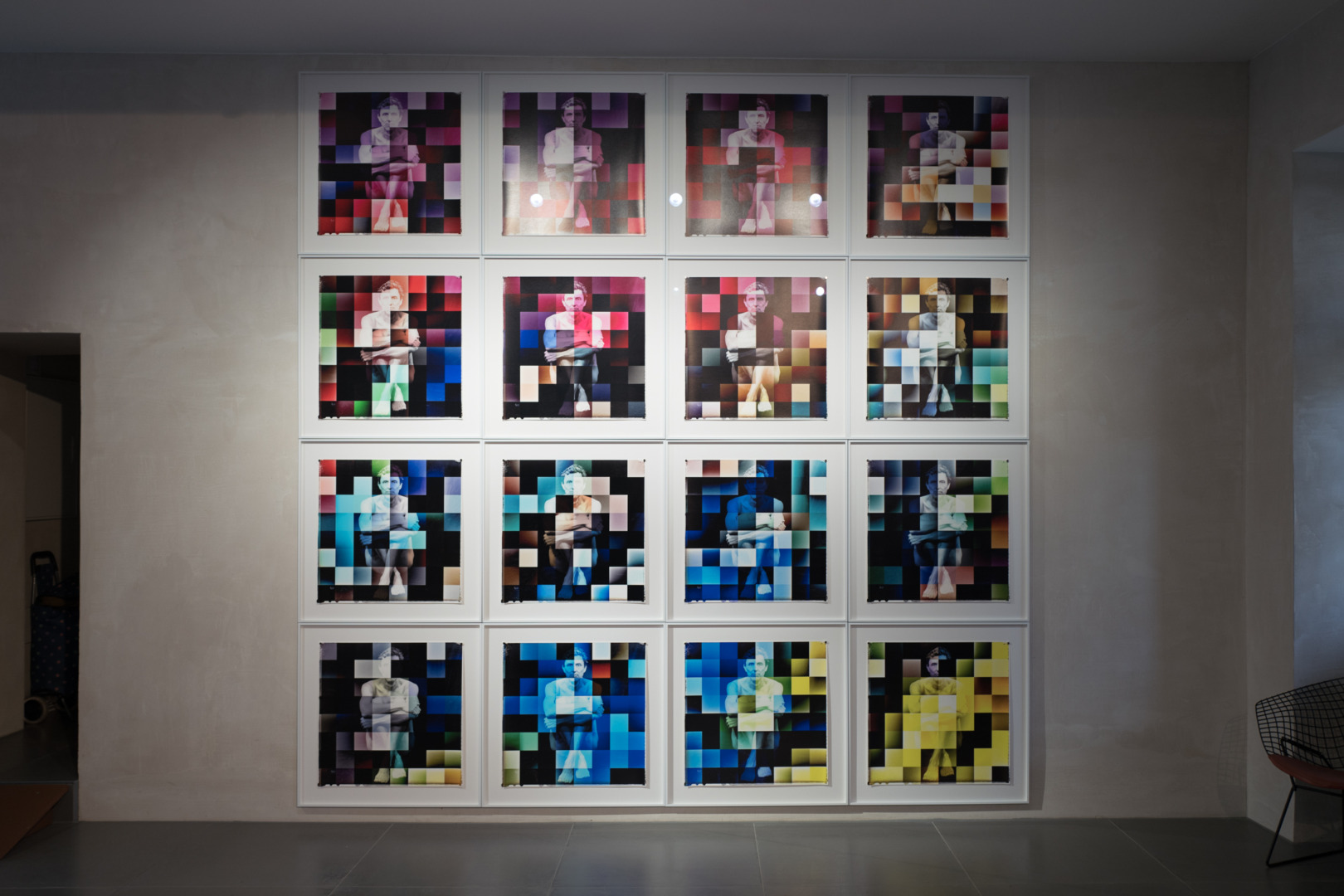
This creates the impression of huge pixels, which in turn are interrupted by the filigree portrait of the man. It is an upside-down world: the pixel here is not the smallest unit as in a normal digital photo, but this pixel combines several contents in itself.
Another small series shows black-and-white images of cranes that are mirrored in a strictly geometric way. The result is an image as if from a monochrome, an austere and not at all playful kaleidoscope. Elements of self-similarity make for something reminiscent of fractal geometry. Against this austerity, Falk places a rust-coloured, irregular stripe at the edge, the kind you get when you make sloppy prints in the lab.
One last and controversial work I would like to mention here. It shows the artist in a Christ-like pose, blended with a photo of flames. You can find that blasphemous or tasteless, but it is powerful imagery for sure, and it shows how falk.brvt is walking the very thin line between art production, personal branding, triggering discourse and hustling for attention. What’s not ambiguous however is the sheer technical quality of the prints. They are excellent, and it’s a great idea to hang these thin and vulnerable sheets (that is, projection surfaces) into the frame by means of two small magnets. That makes them three-dimensional, and the frame becomes something like a flat, sealed shrine for the image. You see, self-confidence is not lacking.
When I started to look into falk.brvt and his art, I had reservations, to be honest. It all seemed a bit too contrived, too artificial and too much of a marketing concept (I first met Falk Baron Rausch von Traubenberg when he wore only orange dustmen’s clothing as a trademark for years and thought that a somewhat childish response to noblesse oblige). But it’s like that again – you simply shouldn’t judge before you’ve seen it for yourself. The exhibition in the Leica Galerie Konstanz is worth seeing. The artist lives in Hamburg and regularly exhibits at other venues. So if you can’t make it to the Bodensee, you might come across him in another place.
falk.brvt, “Wer bist Du, und wenn ja, wie viele“. Leica Galerie Konstanz, until 2 April 2022. Open Monday to Friday 10 am to 6.30 pm, Saturday 9.30 am to 2 pm, or by appointment. Free admission. The Gallery is connected to the Leica Store Konstanz which, of course, is also worth a visit as you will see in this Macfilos article.
Read more from the author
Leave a reply and join in the discussion
The comments section below every article is a friendly, non-confrontational space where you can air your views without fear of stirring the sort of hornets’ nest that is so often a feature of websites. We welcome your views on the content of our articles, and your opinions on all aspects of photography are a lifeblood for Macfilos. Please let us know, in the section below, if you agree or disagree with our authors’ opinions — and please have no hesitation in adding your advice if you think we’ve overlooked anything important.

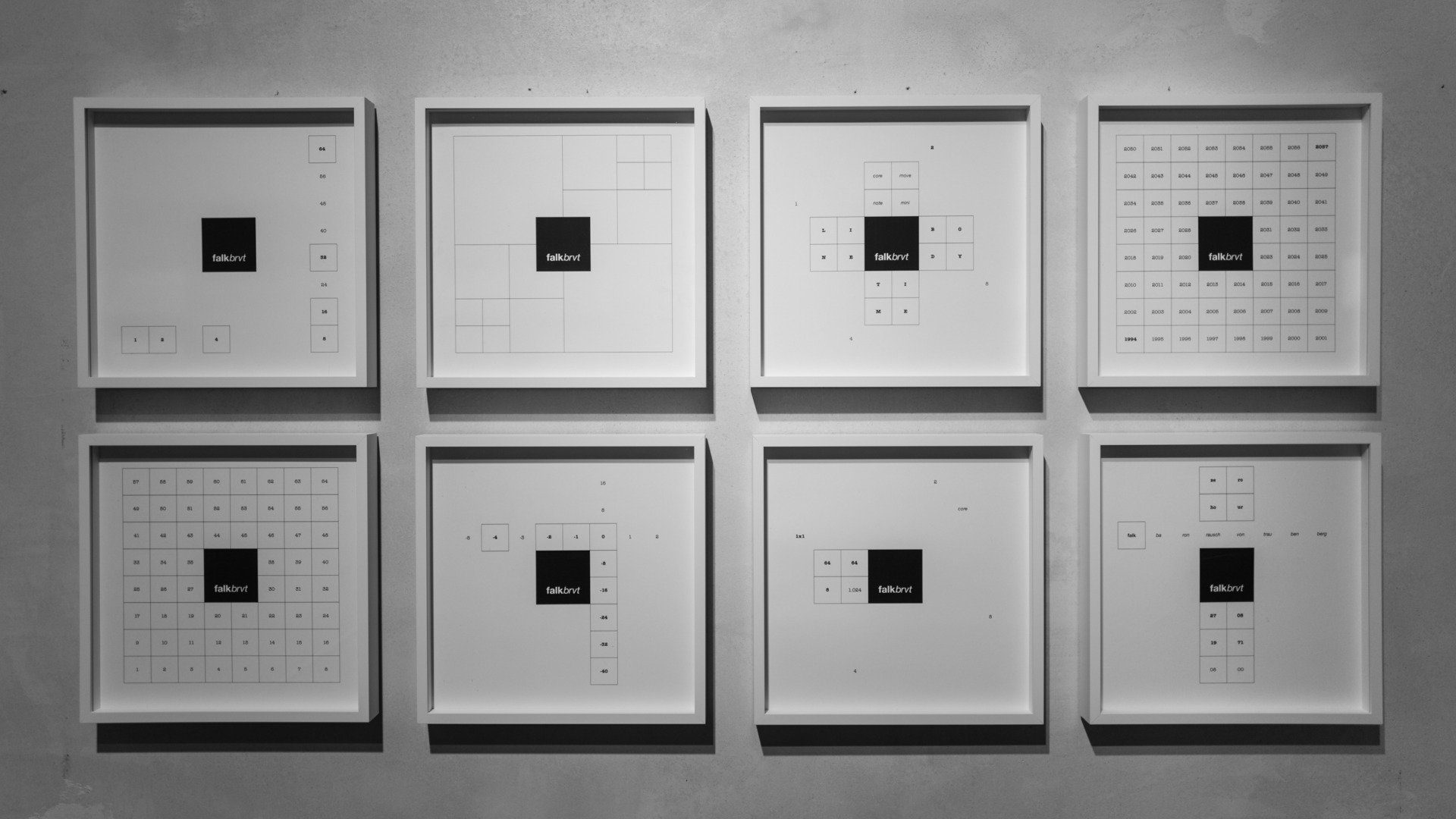
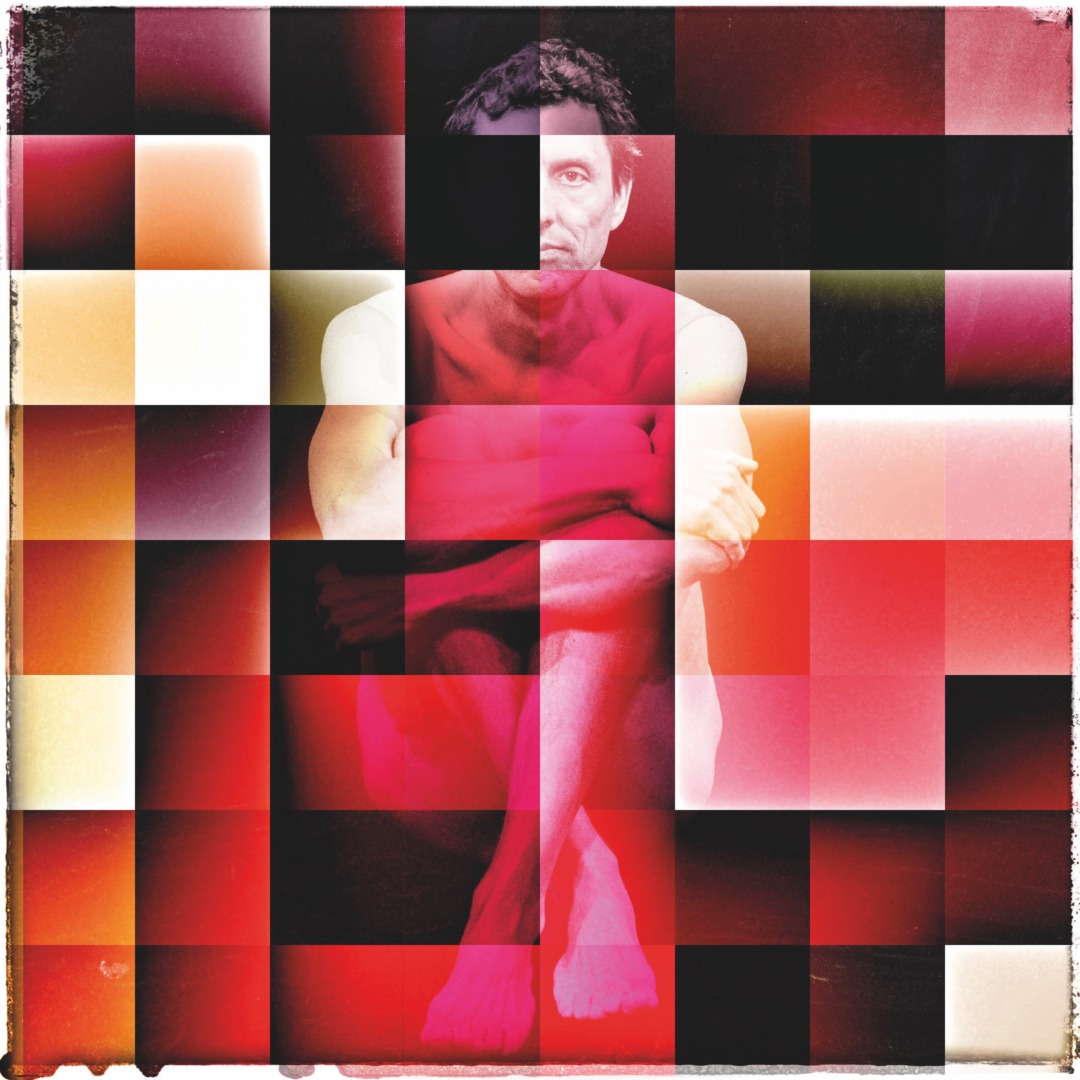
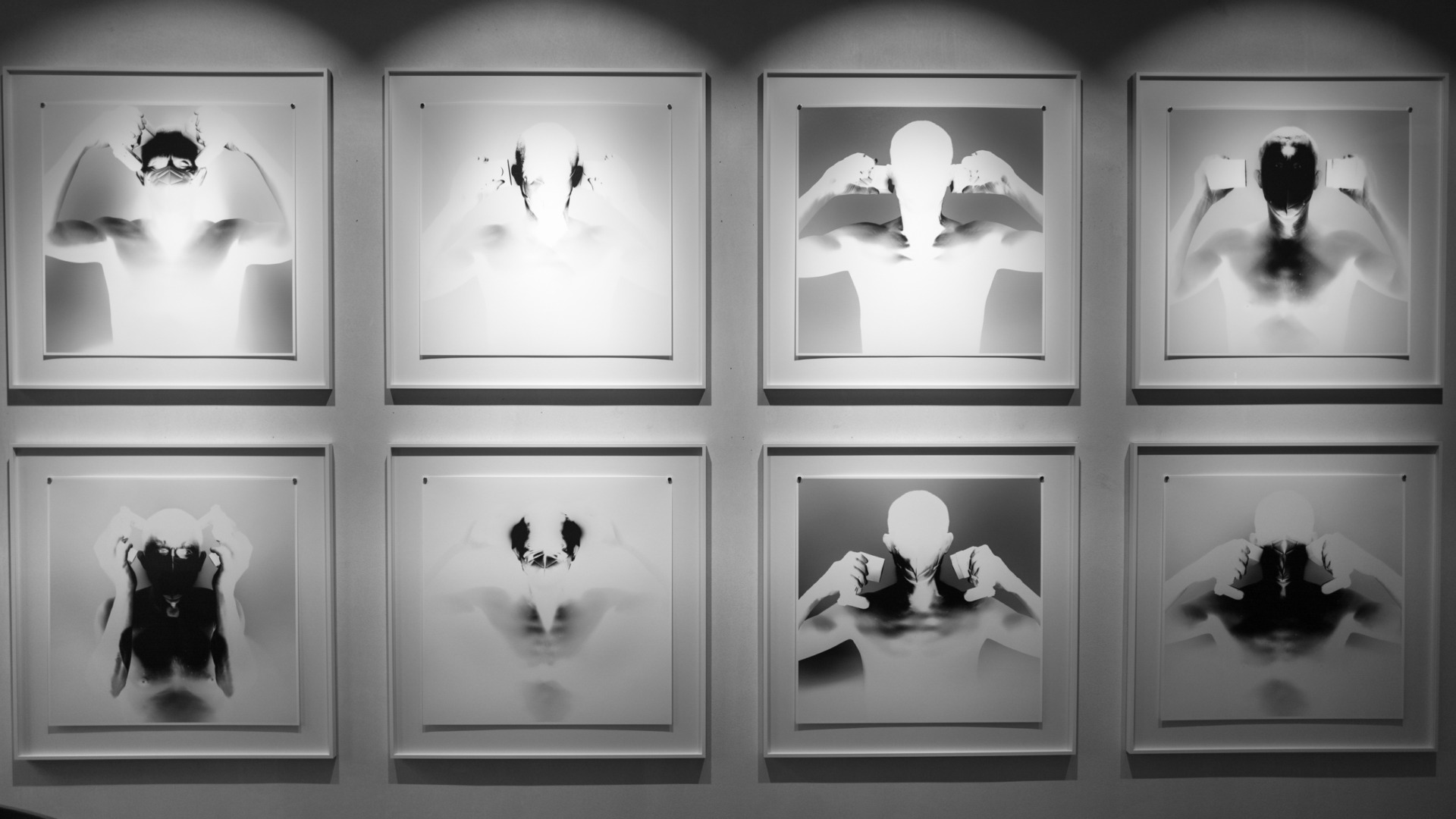
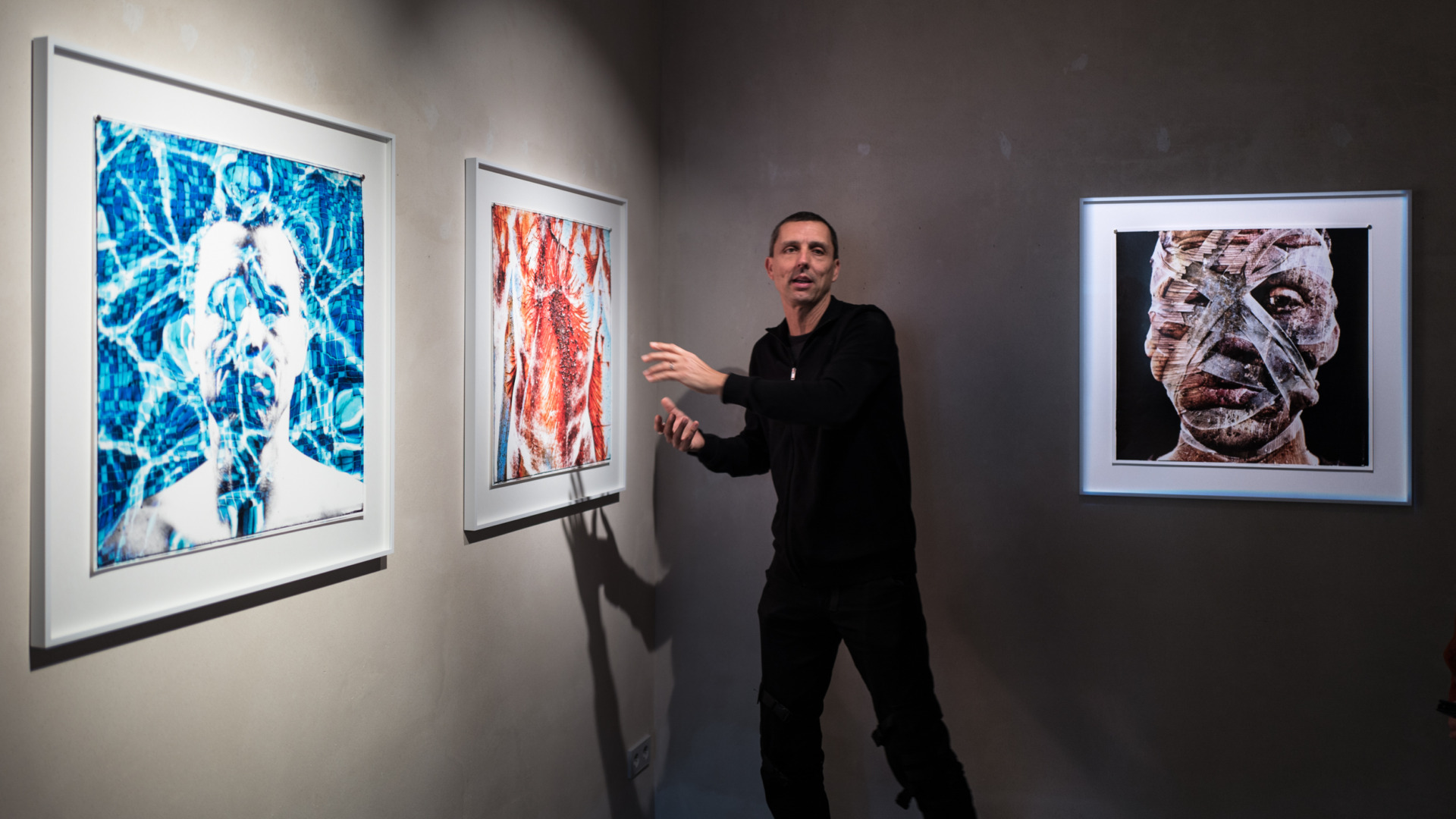
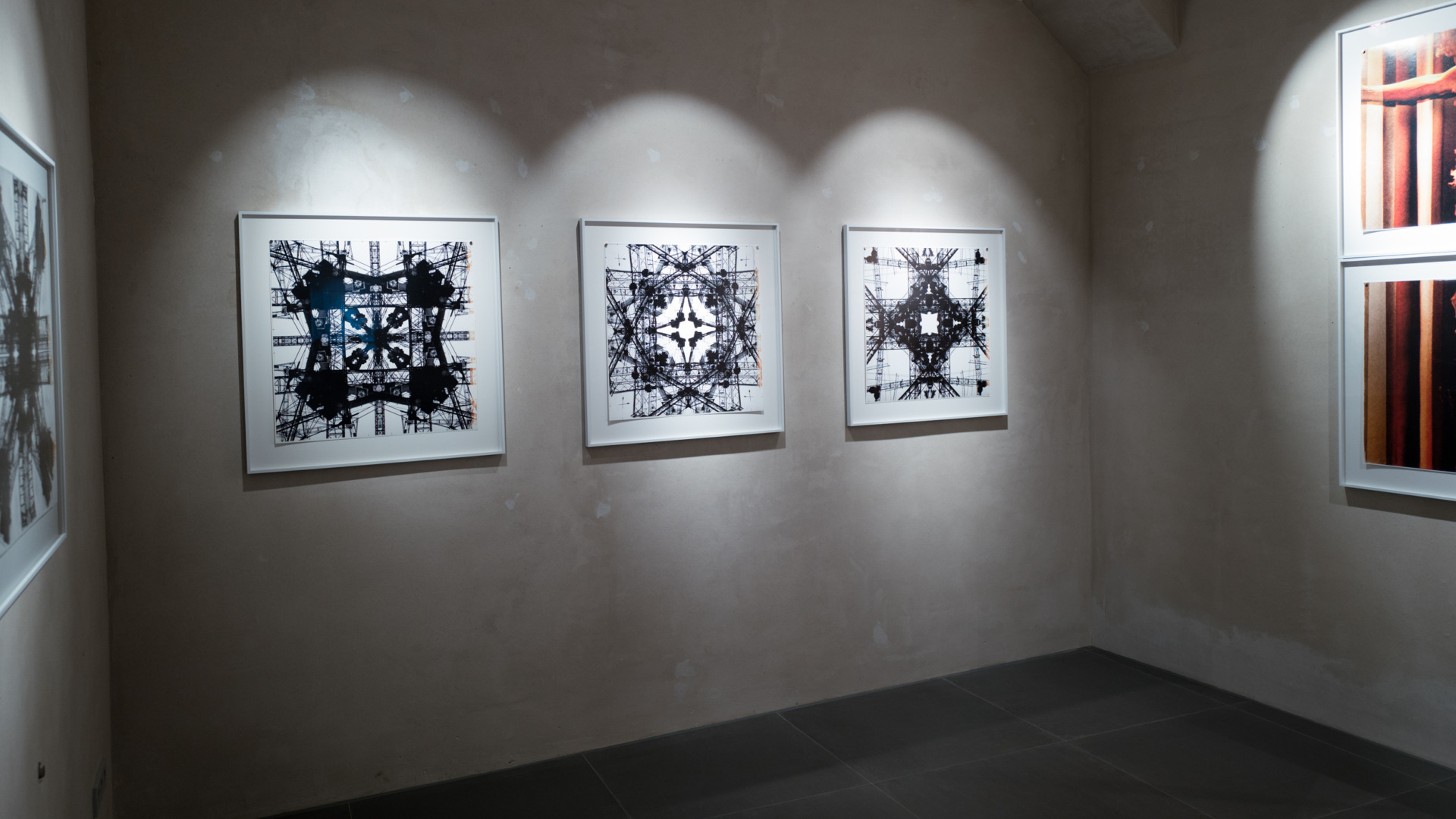
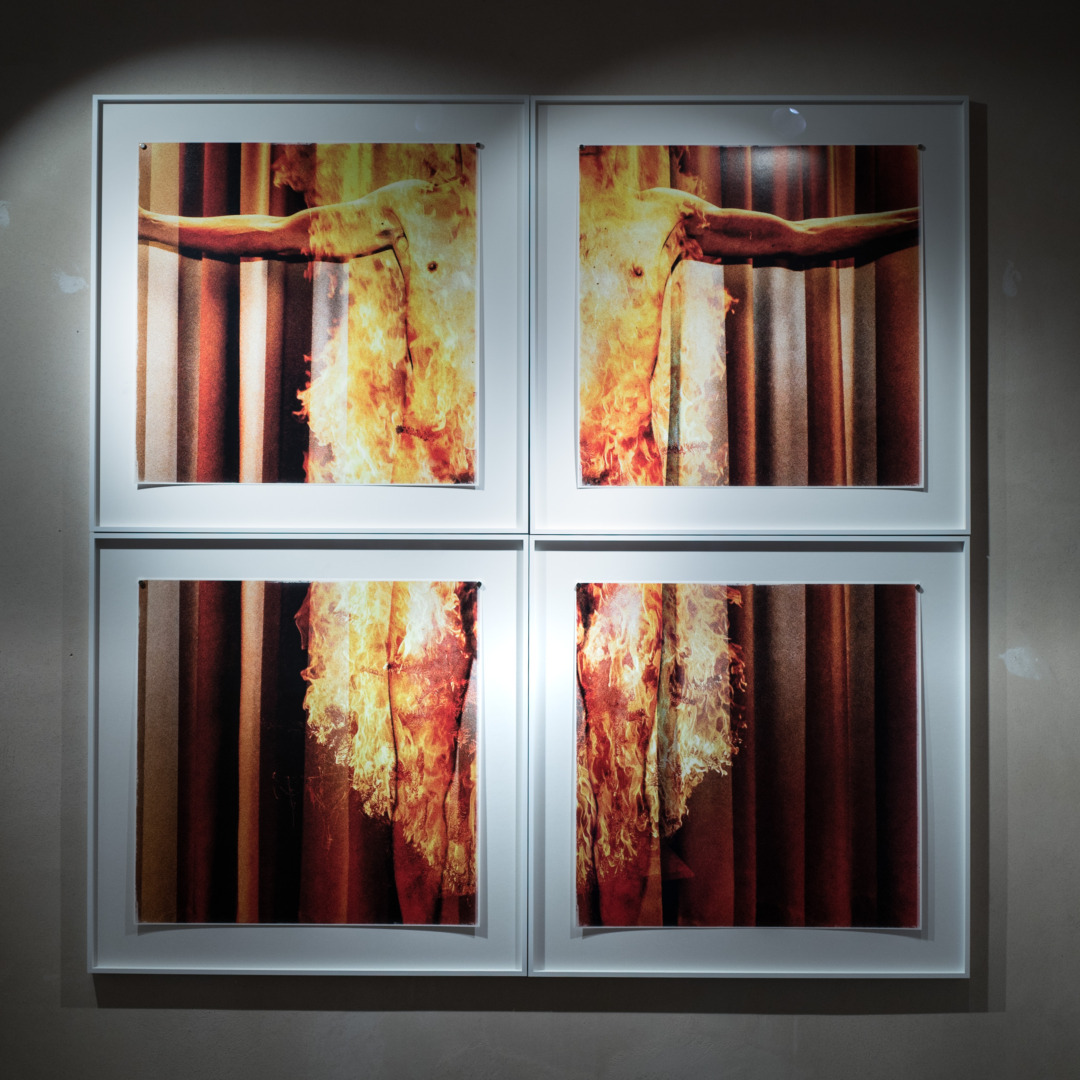
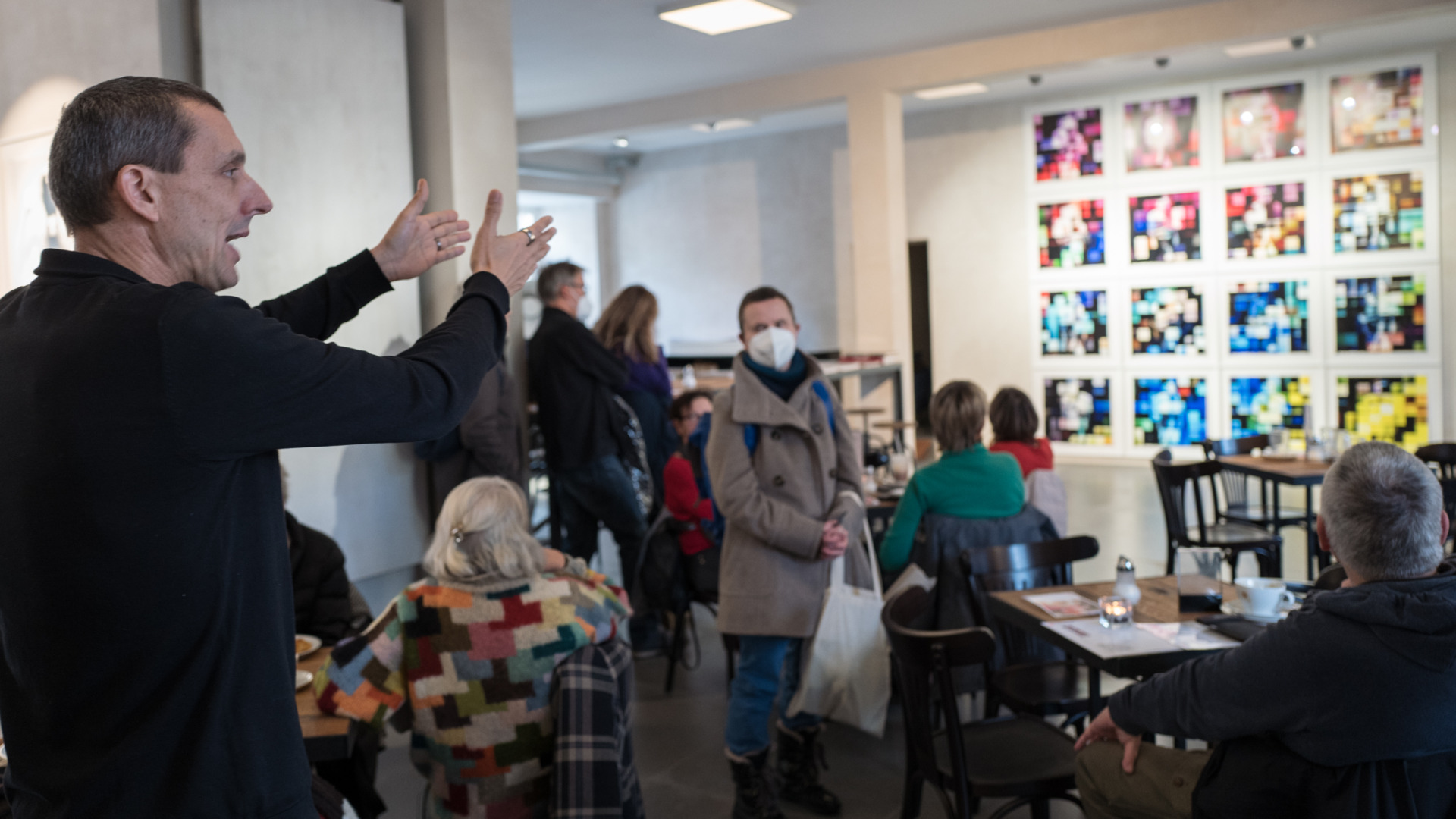
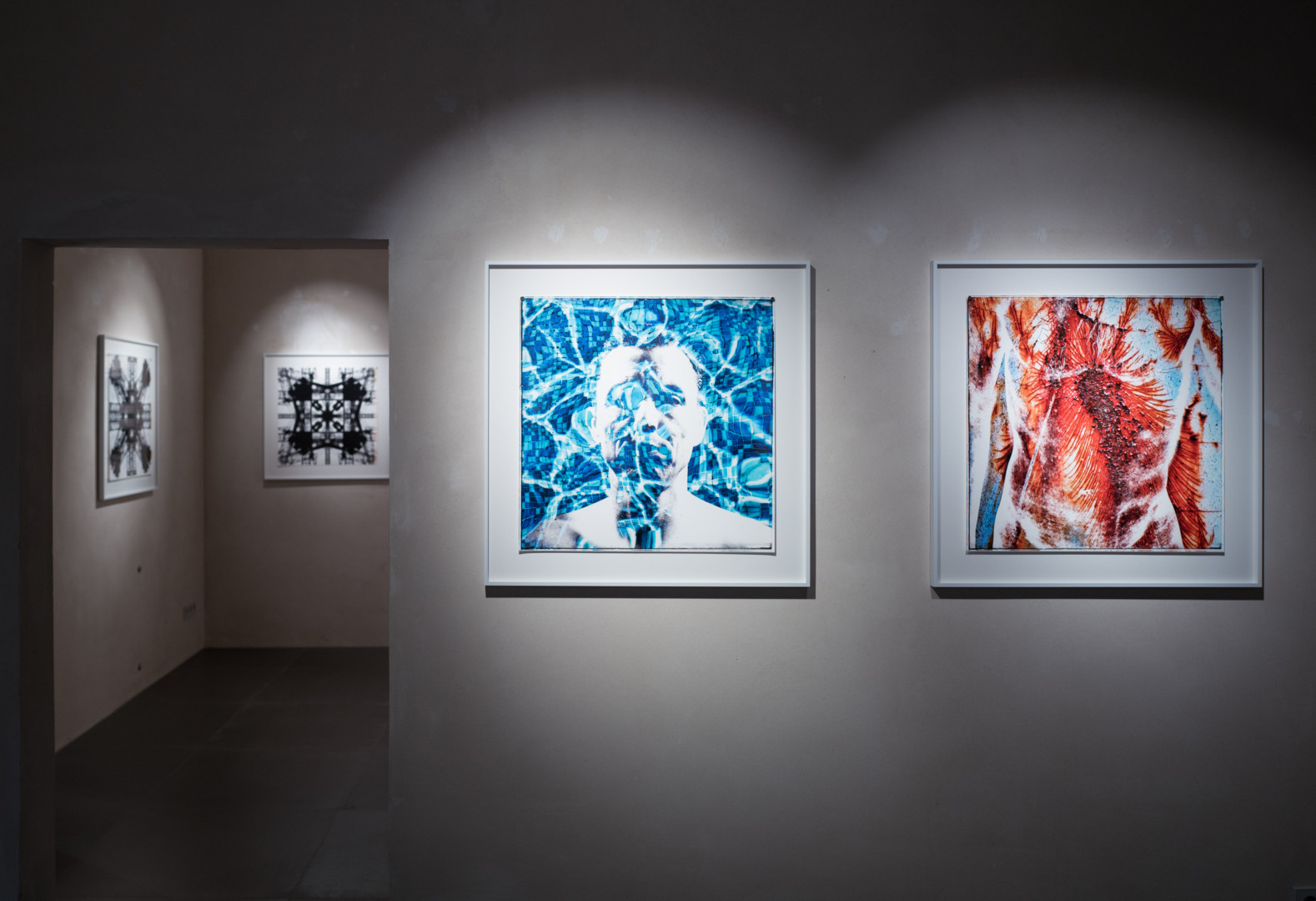
Photography – a long line ranging from snapshots through to abstract art. We all have our comfort zone somewhere along the continuum. The exhibition that you describe challenges my comfort zone, and that’s what I like about it. Thought provoking.
Thank you J-P, for sharing your visit with us.
Hi Joerg-Peter, many thanks for describing this amazing exhibition, as well as your impressions of both the artist and the art. I have to say, I really like art of this kind – large scale, incorporating patterns and symmetry. Unfortunately, I am not in a position to visit the exhibition (being over three thousand miles away is somewhat of an impediment!) but I look forward to exploring this artist’s work elsewhere. As a side note, I have often wondered how the world will handle surnames that get longer and longer as spouses, each with hyphenated names, have children who incorporate both parent’s surnames, and who in turn go on to have children with someone who also has a multiply-hyphenated surname! This guy has neatly solved that issue by creating an acronym from his multiple monikers! Incredible! All the best, Keith
Dear Keith, thanks for your feedback. I’m glad to read you had some fun with my article. Arts is always a bit special to write about (I’m trained in doing so, but it remains a challenge to offer a judgment without being biased). Best, JP
Great to know, J P. Thanks
“What’s not ambiguous however is the sheer technical quality of the prints“: Obviously he works with Leicas. Great deduction by myself from the place it’s exhibited.
So, this artist is an architect and great aficionado to play chess with himself. That’s the mystery, thus the self portrait. The problem with number eight is double. First it doesn’t match the traditional square format, 6 by 6. Fabulous to make chess boards. And second, it’s 2 three power; obviously missing a third dimension. So results are rather flat.
I never was a curator, but you as art historian, let me please know how good is the reasoning.
As an artist, of course I always think I could do that too. But that’s his, congratulations. Just too much computer and printer in there, from my point of view.
Dear George, thanks for your comment. I will try to answer your questions.
First, I do not know if the artist really works with Leicas. This is not a compulsory requirement to be exhibited as an artist in the Leica Gallery.
Second, The chess allusion is striking indeed but it is not applicable to all the images and series.
Third, eight as 2 three power is brilliant. The third dimension is somewhat materialized in the frames in which Falk puts his images. These are pretty much like flat hanging cabinets in which are hanging his prints, held in place with two magnets only. But maybe that’s too far-fetched.
I would never call anyone else’s reasoning good or bad, that would be pretentious. But I am happy to assure you that it talks to me and that I wish you could see the exhibition yourself because I am sure you would get some more interesting ideas.
And is there too much computer in there? It’s in the eye of the beholder. I personally prefer the more authentic way of photography / photographic art but I can appreciate this kind of work all the same. Art is free and enjoys freedom here. Let’s stand up for it to stay that way.
All the best, JP
Dear Jörg-Peter
Thanks for your reasoned and equânime comment.
Like you, I can’t detach photography from reality. So, in my view exhaustive photoshop and absolute abstraction want to be paintings and aren’t photographs.
About computers and printers, are certainly nearly a must today. But at least the photographer’s should survive, in my opinion.
Finally magic is perhaps somewhere or maybe nowhere. Is it in eight?
Best
dear george, first i would like to give you an idea of my relationsship to the number eight. if you want, please follow my link to the text “the power of eight” – it comes more from the digital photography (8 bit = 1 byte) and my newstart in 2018 (the 8. day)
https://falkbrvt.com/the-power-of-the-8/
i will try to discuss the very interesting thought of authentic photography a little bit later with you and jörg-peter. and by the way, i take my photos with several kinds of cameras and scanners…
Dear falk
Congratulations first.
I’m architect too, but naval, naval architect.
The point is ship shapes aren’t developable in general. Perhaps that’s the reason I made my square minded education to address into “freedom” when I got into photography few decades ago.
Of course freedom is quite often into quotation marks.
I’m not a devotee now of numbers. Not even celestial ones. I mean, no formula will automatically make things work.
I encourage you to keep on going through what you believe. Being the eight or any other thing.
My photography just tries to be honest. And that’s what my previous comments were about. Have a look at my avatar link if you wish.
Thanks
dear george
thank you very much for your message and the reference to your photographs. i like your collection, the alternation between color and black and white – the whole set seems very yearning to me, i find it exciting. it could also be a kind of photographic diary.
i have now read through your dialogue with jörg-peter at my leisure and would like to add a few comments of my own. since i try to express my thoughts in german in advance and then translate them, please do not put everything on the gold scale.
photographic prints, with a few exceptions, are only two-dimensional. that means, photography is always superficial at first. but ideally, it can go into the depth with what it shows. that would then be what i would perhaps understand as a good photography. thus, the third dimension, to stay in my numbers game of 8, stretches out to the viewer. this can only be the case if my picture touches him. otherwise, the picture remains superficial.
i find the conceptual pair of reality and photography very exciting! i can follow your thoughts on this in the dialogue with jörg-peter, but i myself have a completely different relationship to it.
photography, i think, is always an abstraction of time, space and context. thus, every picture is an already seen and therefore subjective picture of the respective photographer. the stronger one follows this thought, the more the possibility of an objective view by means of a camera is lost – and in my opinion, this objective view is then often equated with the claim of being true, real or authentic. i think this is not necessary at all.
for me, the image at the end of my creative process is crucial. on the way there, i work with technically produced images, mostly photographic images. this is one reason why my works are now presented in a photo gallery. but you hit a nail right on the head with your question or suggestion whether these are not rather paintings than photographs. from the process, they are technical images, visually they are partly closer to painting than to (classical) photography.
it would be really inspiring if we could exchange our thoughts directly in the leica gallery, maybe even together with jörg-peter. maybe we can exchange one or the other thought this way.
all the best
falk
Dear falk
Thanks for visiting some of my photographs and for your words.
Certainly the only way to have a good idea about your work is to be in Konstanz. Thanks for your invitation too; for sure I would enjoy that.
Photographs and paintings use perspective to make understand about space. I think space is perhaps what photography is all about at the end. No light no space.
My reflection about the third dimension was in relation to number 8. As mentioned no way to properly get to a personal conclusion without actually watching the photographs.
My idea of photography isn’t limited though. I actually enjoy also most of what people do in the way of finding new forms of expression. Just I have my preferences.
Numbers and proportions are deeply rooted in photography. From 2.8 to 22, and etcetera. In fact one my series was about having shot in f:8.
I trend to like criticism, and I hope that encourages you for the best.
Best wishes and good luck